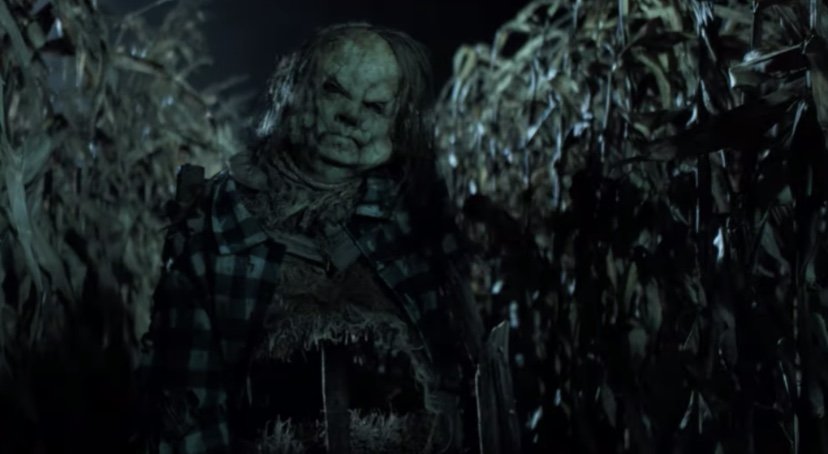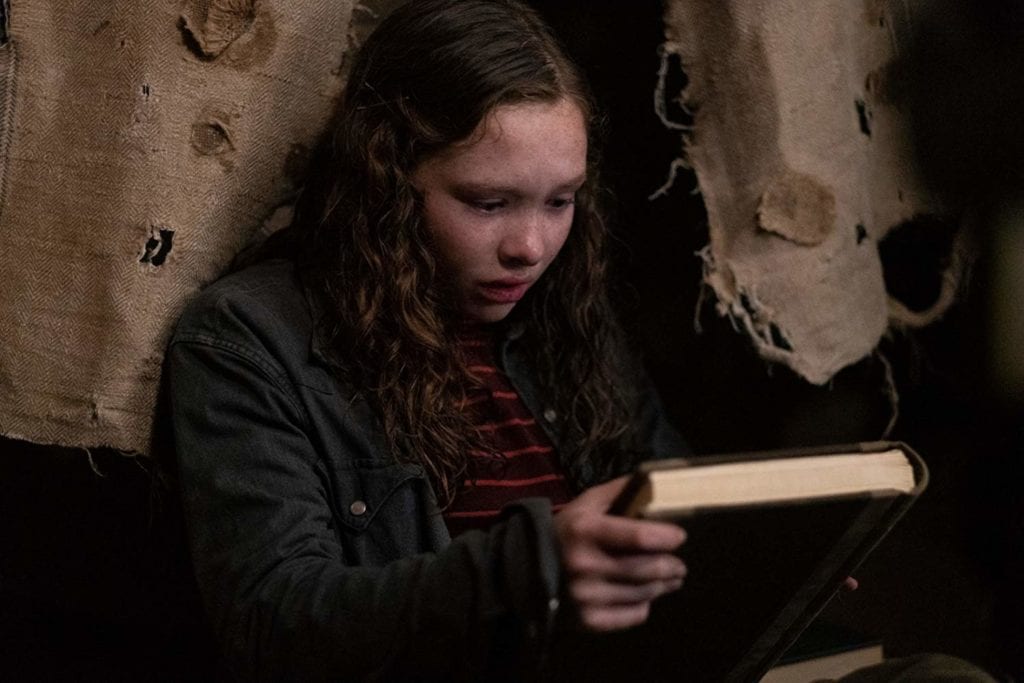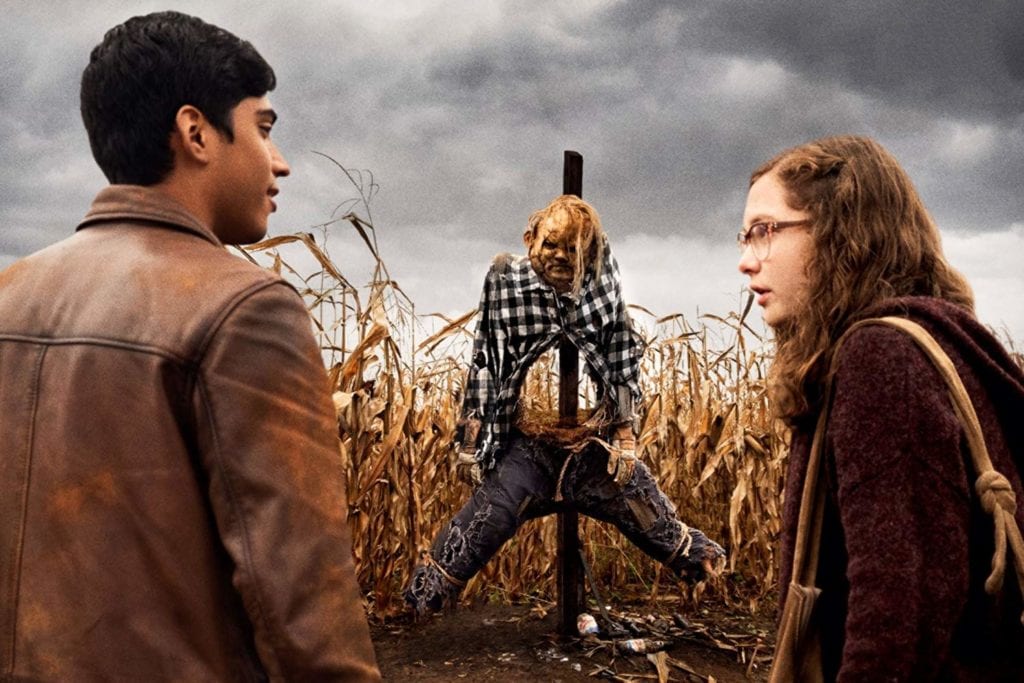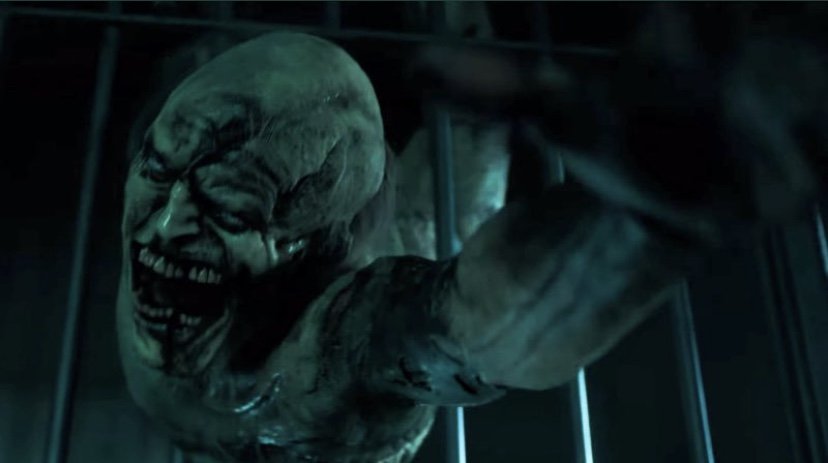
Scary Stories to Tell in the Dark is a 2019 film written by Dan and Kevin Hageman (with some involvement from Guillermo del Toro) and directed by André Øvredal. It stars Zoe Margaret Colletti as Stella, a 17-year-old outcast, who accidentally unleashes a terrible curse on the teens of her town, causing them to disappear without a trace. She teams up with her two best friends and a handsome but mysterious drifter to unravel the mystery and stop the evil entity before it claims them all.
The Casting
In slasher films, it is common to age the actors up from their character counterparts. For example, Sidney Prescott, from Scream, was written to be 17, but she was played by 23-year-old Neve Campbell. These casting choices often come down to the complicated logistics of casting young actors. It can be hard to shoot a film on a budget when you have to work around school schedules. Unfortunately, these films tend to suffer from a teenage uncanny valley, with performers acting far more like adults than children.
Thankfully, Scary Stories to Tell in the Dark has an excellent cast of young, relatively unknown actors. 17-year-old Zoe Margaret Colletti, in particular, juggles many tonally dissonant scenes, and she does so with confidence and natural charm. 19-year-old Michael Garza, as Ramon, also puts in an excellent performance, as do the other young actors.

In the age of Stranger Things and It, age-appropriate casting may not seem like a big deal, but it’s actually very surprising. It may have a dark tone and an R rating, but it usually shies away from showing the deaths of children and teens. Meanwhile, Scary Stories, which is rated PG-13, pulls no punches when it comes to the fate of its characters. Sure, the movie goes out of its way to explain that the teens are “disappearing,” but we watch the supernatural attacks as they happen. Some of these kids just aren’t coming back.
This brings a refreshing honesty to the film. The teens look like teens, and they act like teens. Sometimes their actions and dialogue are anachronistic (I’m pretty sure nobody used “douche bag” as an insult in 1968). However, they look and act young, and that gives the story an added dose of unsettling reality.
The Story
Scary Stories utilizes the tried and true formula of “speak the truth, right the wrong, lift the curse” seen in movies like Paranorman and The Ring. The intrigue is interesting enough to hold the audience’s attention for the 2-hour runtime, but not a second longer. I enjoyed that greed was placed front and center as the main corrupting influence, rather than fear and hate. After all, fear and hate can be the byproducts of aggressive propaganda, often fueled by greed.
This is why the film focuses so heavily on the Nixon administration. Unfortunately, the message is buried in the background, never actually playing a role in the story. Because of this, the Nixon sections feel shoehorned in. The film’s vague political statements will likely fly right over the heads of the movie’s target audience.
There was a real effort to give Stella and Ramon some background and motivation, besides survival. But in a slasher movie, there isn’t really enough time to dig into these characters. Instead, we get very clunky exposition about Stella’s damage, and though I feel for her, it’s not particularly noteworthy stuff. And, worse, it has no bearing on the plot. Likewise, Ramon’s tragic backstory may be thematically poignant, but none of it really matters when the characters are screaming and running from monsters.

That said, the movie manages to pull off an adaptation of very difficult source material. The book Scary Stories to Tell in the Dark is an anthology of short stories aimed at pre-teens, and the movie is a surprisingly faithful adaptation of it. The fact that the film makes any sense, considering how disjointed the stories in the book are, is an accomplishment. It just didn’t need so many extraneous elements.
The Scares
The previews for Scary Stories to Tell in the Dark weren’t impressive. It looked like something akin to Are You Afraid of the Dark; cute but forgettable, and certainly not scary.
Scary Stories to Tell in the Dark isn’t cute, and it’s legitimately scary. It might not be The Exorcist or The Shining, but the horror is effective. Because the film is based on an anthology, the setups for the scary sequences are varied, never sticking around so long that they feel dull. In other slasher movies, keeping the audience invested during the fifth teen stabbing can be difficult, but that is not a problem here. Whether you’re afraid of creepy crawlies, corpses, ghosts, or unnamed horrors, this movie has you covered.

Scary Stories is also beautiful to look at. It builds tension in visually interesting ways, utilizing expert set design, lighting, and camera work as well as creature effects and CGI. The scene with the Pale Lady was a particular delight. Her design was deliciously unsettling, and the sequence was expertly paced. As a fan of the book, I loved seeing these creepy images brought to life with such love and care.
Final Thoughts
Scary Stories to tell in the dark proves that horror movies don’t need an R rating to be scary. While other horror films, like Insidious, may boast a PG-13 rating, the target demographic for them is clearly older, focusing on the adults of the story and utilizing slow, deliberate pacing. Meanwhile, Scary Stories is a perfect film for its target audience, ages 12 to 16, nimbly balancing the gruesome deaths of teenagers with a surprisingly restrained approach to gore. The story is average, and the world-building details often seem out of place, but the scares are imaginative and effective.
Like the book that inspired it, Scary Stories is a perfect stepping stone from the relatively safe scares of Goosebumps and other child-friendly horror to more mature, but still age appropriate, subject matter. I heartily recommend Scary Stories to Tell in the Dark to anyone looking for a bit of heart-pounding fun.



